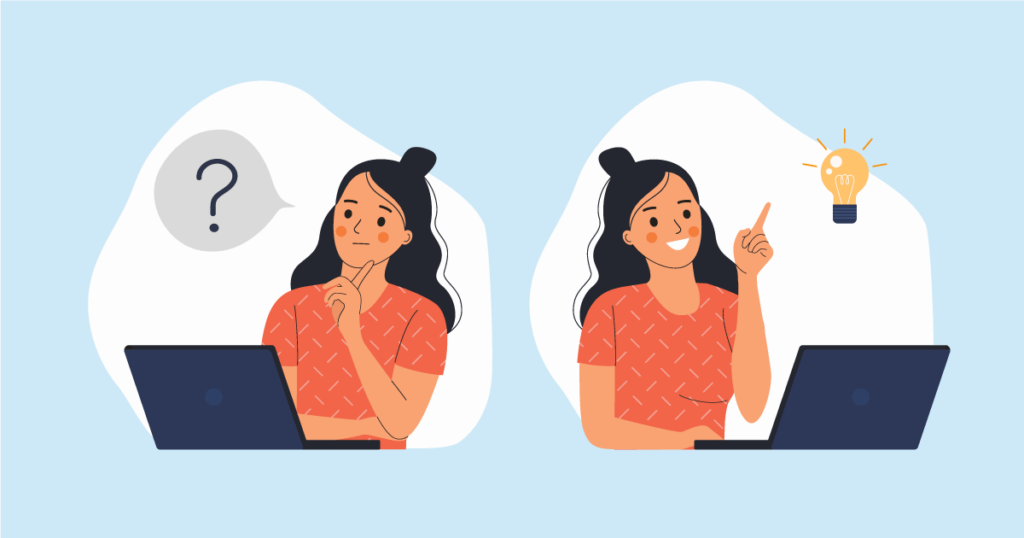How to Break Through Your Dilemmas in 3 Steps

Photo credit: iStockphoto.com (Lyudinka)
Wendy K. Smith is an expert in strategic paradoxes–how leaders and senior teams effectively respond to contradictory agendas—and how we can all more effectively navigate the pull of “either-or” thinking.
Wendy is the co-author of the 2022 book, Both/And Thinking: Embracing Creative Tension to Solve Your Toughest Problems. She is also a professor of management at the Alfred Lerner College of Business & Economics and Co-director of the Women’s Leadership Initiative at the University of Delaware.
She spoke with us recently about her new book, the three steps involved in moving from “either-or” to “both-and” thinking, how to apply these insights to career transitions, and more.
Here are excerpts from our conversation, lightly edited for clarity and brevity.
Q: What led you to focus on the “either-or thinking” of strategic paradoxes?
So many things! One of them was my own career decisions. Part of the exploration of this research stemmed from the number of times I felt the tug of “either-or thinking” in my own life.
For example, at one point, I was torn between having a career in leadership or academia. There were so many places where I felt that kind of tug of war. When it came up in the research, I thought maybe there was a better way to think about it. One thing that I have found is looking for new possibilities brings relief.
Q: As Co-director of the Women’s Leadership Initiative at the University of Delaware, what are the biggest challenges you see professional women struggling with in 2023?
One of the biggest challenges is women’s sense of confidence, security, power, and opportunity. I would love to help every student see possibilities in a new way. If we could tweak their sense of confidence, it would make a huge difference in our world. This is one of the reasons I am passionate about this work: not only to enhance opportunities for women but to bring diverse voices to work on the problems we face today.
I also think women’s movements have become divided between helping change a person’s mindset and skills or changing the system. I think we are best served when we think more holistically and bring both together: addressing limiting beliefs and the context around them that reinforces them.
Q: Let’s discuss your book, Both/And Thinking: Embracing Creative Tension to Solve Your Toughest Problems. What are some of the most important lessons you have found to help people transform tensions into opportunities?
We often go to “either-or” thinking for many psychological, structural, and sociological reasons. We pull things apart and think we must make choices. But what we find in research and argue in the book is that that is limiting at best and detrimental at worst.
The invitation of the book is to move to “both and,” “yes and,” and “right and right” in decisions we make in our careers, parenting, partnering, work lives, leadership, and dealing with big crises of the world. It’s a mindset we can apply wherever we feel the tug of war.
We identify three steps:
Step 1: Change the questions.
The questions we ask impact how we think about the answers. When we notice a frame as “either-or” or “this or that,” it forces us to choose. If we change it to “How can I do both?” it invites us into more creative thinking.
Step 2: Separate and connect.
Typically, we pull things apart to make a choice. Instead, we recommend finding points of connection. Do a deep dive to recognize the different options. Recognize what is at stake in service of finding points of connection.
Step 3: Shift the outcome.
People think the ideal is win-win and happy. I find that happens sometimes, but not often. Instead of choosing between two things, think about shifting or moving over time where you can accommodate both alternatives. The work-family dynamic applies here. There is never a moment of balance. We are always shifting, balancing to accommodate competing ideas over time.
Q: Many women want to make a career change but are concerned about jeopardizing their current position and income. How can they use “both-and” thinking about this?
First, name the dilemma. What is it? The dilemma is a tug-of-war of opposing demands. What are they? Then think about if there is a way to stay and go. Or make more money and be respected. Then you can do a deep dive into what it is about your current position that you value and what it is about going that you would value.
And next, you can ask: How can we accommodate stability and certainty with a move? Are there ways to ensure financial comfort and enable us to try new things? And what would that look like?
Instead of “Can I make an abrupt switch?” maybe the ideal is “Can I make money and move into a job I am passionate about?” Maybe it is more of shifting back and forth.
Maybe you can do more of what you are passionate about without giving up your job. Maybe be a board member. Maybe there are ways to extend your networks in new ways without fully giving up what you are doing.
Q: How have you used these ideas in your life?
If you are asking me if I have resolved either-or thinking in my own life, the answer is not at all. But ironically, my work in the Women’s Leadership Initiative is “both and.” I got to work on a book with a deep dive into academic research and have an impact. I didn’t have that long-term vision of possibility when I started. But now, in hindsight, I see how “both-and” played out.
